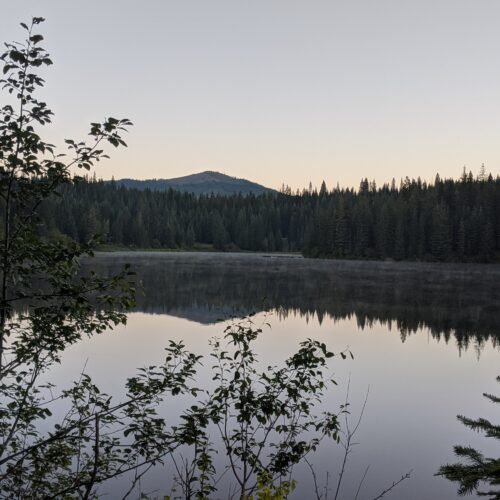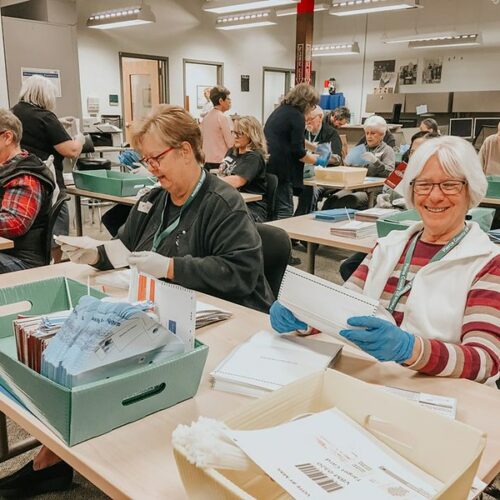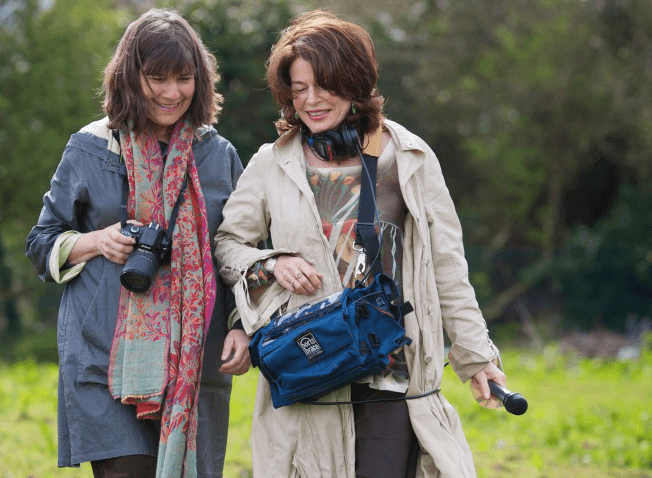
A Little Bit of This, A Teaspoon Of That: The Stories And Craft Of The Kitchen Sisters
“After food – and before love – people need stories.” That’s Davia Nelson. She, along with Nikki Silva, are the Kitchen Sisters. Their mission? To find the stories behind our culinary heritage. Since meeting in 1979, the Peabody Award-winning duo has produced over 200 stories.
You may have heard their recent series on Morning Edition called Hidden Kitchens. They’ve uncovered stories of the now-extinct dog that powered turnspits in kitchens and led to the creation of the SPCA; how Italian agriculture co-ops have fought Mafia control of the pizza world; and the ways private and communal kitchens embodied the Soviet struggle.
But you won’t hear their voices on the air. The ingredients in their stories are the voices of those involved. No narration, nothing to get in the way of the stories. Davia Nelson talks about their name, their craft, and the power of stories.
On the origins of the name Kitchen Sisters
“We took our name from two stone masons, actual brothers, Kenneth and Robert Kitchen, who built by the light of the moon. [They] built chimneys and porches and yogi temples and goat milk bars and towers. This was in the 1940s.
“Nikki and I had just met. We met in Santa Cruz after college and we were starting to do our radio show together. We were in this funky old kitchen. We were preparing dinner and we were reading this book called “The Sidewalk Companion to Santa Cruz Architecture.” Getting ready to interview the guy [who wrote the book]. We were looking desperately for an interesting story for him to tell on the air that coming Tuesday on our live afternoon show. So as we’re cooking we starting reading about the Kitchen brothers and we got mesmerized…and we botched dinner!
“And then when we got on the air that Tuesday we started asking the author the questions of the book and we said “Tell us about the Kitchen brothers, not to be confused with the Kitchen Sisters, who are here with you today.” It was going to be 25 years before we started doing food stories. We weren’t doing food stories at the time.
“You know the kitchen is the room where the best stories are told, that smells the best in the house, where all the parties begin and end. It just had the right spirit.”
On humanity’s need for stories
“Stories are like food, aren’t they? They are so basic to who we are. It’s just some essential matter. Stories are like maps, stories are blueprints, stories tell us how we get from here to there. How we’re going to get from here to the next place. We have kept each other captivated by the campfire. Or you think of the story of Scheherazade.
“I don’t have the science of why story is at the center of who we are as a species. Why after food and before love stories are the most essential aspect of what we need for survival. Maybe it’s that [the world] is so wide, and terrifying, mysterious and unknown. We’re born into this life and into nature and all there is unknown and stories help decode it, unravel it. Help make sense of this huge, almost random journey that we are on. It begins and at some points it ends, depending on how you look at it, or it transforms.
“But you leave this shape, and stories help you navigate it. They’re navigational devises. Stories are compasses too.”
On the story of the turnspit dogs
“I was looking in a magazine and I saw the title of a book called Amazing Dogs: A Cabinet of Canine Curiosities I’m obsessed with dogs, my sister is obsessed with dogs. Nikki, the other kitchen sister, is allergic to dogs. Dogs have this big place in our lives. And I loved that title and at that moment said to myself I was the next kitchen sisters to be called Amazing Dogs.
“We’re looking for the points we have in common or the things that unite us not divide us. People love dogs. I think there’s so much fatigue to hear stories about homelessness, war, social justice, hunger, loneliness, seniors, elders. Somehow when you talk about food, or when you talk about music or dogs you have a way to talk about all those vital issues that are the undercurrent to so much, but in a new way and in a way that connects people. And that’s what we’re looking for.
“[Amazing Dogs] had a chapter on the turn spit dog. It’s one of the few species of dog to have gone completely extinct. And I thought: there it is. That’s the story we must do.
“I called the author up and we jumped in together. I went to England, to Wales, in search of the old dogs. In search of the old wheels and the people who knew about them. In search of those old Georgian kitchens. That’s what led to that piece. As the story says, the turnspit dog replaced child labor. These little orphan boys, 6 to 11 years old would stand there for hours and hours turning the spit. The woman in the story would talk about these poor little lads and how their hands would blister. Can you imagine how hot they were standing by these roaring fires? You know they weren’t well fed.
“Well then someone invents these big wooden wheels and pulley systems and they figure out how to replace the boys with dogs. We use that story to talk about many things, but one of those things is slavery. When we began that story we didn’t know that the turnspit dogs and the way they were treated in hotels in Manhattan led to the founding of the SPCA.”
On difficult stories
“I want to say they all are difficult to put together. We gather 30 hours of tape for a 7-minute story. We go so deeply into the history. I feel like I am betraying listeners because I don’t give you that piece of Shakespeare or I don’t have time to tell you that quote of Charles Darwin. Sometimes you can cut things for time but you’re taking away the poetry of the speech. You have all the information but you don’t have the artistry. That feels very difficult to both Nikki and myself, to leave so much of it on the cutting room floor.
“I think one of the difficult stories that we did was called “French Manicure: Tales From Vietnamese Nail Salons of America.” It came out from getting manicures and really loving this woman I had come to know over the months named Shirley. I started to know her children. She started to know about our radio stories and we started to connect. Then all of a sudden I realize her name isn’t Shirley. There are no Shirleys in Vietnam. And I asked her how she became to be known as Shirley and she told me harrowing stories of her passage to America, of the war and of losing her family.
“The same thing that is one of the hardest is also one of the most beautiful things about what we get to do. We were suddenly in the world of all these Vietnamese refugees and what they have really been through. And then [to hear] their survival, and their ingenuity, and their entrepreneurship.
“We did a story called “King’s Candy: A New Orleans Kitchen Vision,” about a man who was in prison in Louisiana in Angola Penitentiary for 29 years in solitary confinement. While in his prison cell he made clandestine candy, these pralines. And he would help get them snuck to the guys on death row. After 29 years he was found not guilty and he was let out of prison. Then he went boom from prison into Hurricane Katrina. Telling his story was so important for us to tell. We live through what people are living through.”
On not using narration
“We were in our 20’s and there were two of us. We would do these long interviews. We were obsessed with archival audio, with field recordings, with music. Basically for us we are creating small films. It’s so cinematic for us. We are just helping people visualize it deeply. And when we put our voices in with questions and narration it felt like people were hearing fewer stories that we had gathered. Less pool balls in the pool hall, less Willie Nelson music in the country bar, Less of the great story that King Wilkerson was going to tell you about being in prison. We just found a way and style of asking questions. Asking people to paint a picture of things, to describe things. Trying to elicit responses where we knew we wouldn’t need to be there. Maybe we were a little intimidated by writing. But more we just wanted to keep everything in the story and we somehow didn’t need to be there.”
Copyright 2014 Northwest Public Radio
Related Stories:
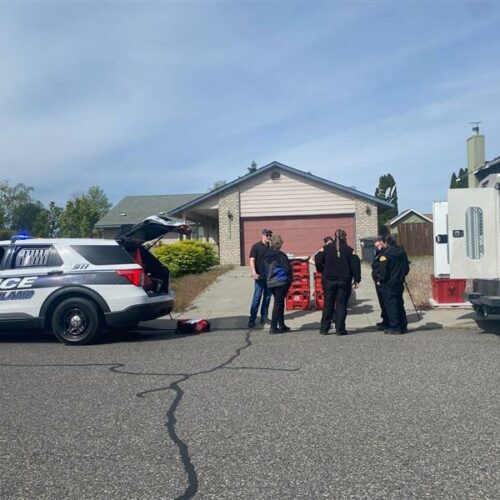
West Richland double-murder, kidnapping suspect shot at police, officials say
FBI, county and police officials wait for the all-clear to collect evidence at the home of Elias Huizar, 39, where his 17-year-old girlfriend, Angelica Santos, was found dead. (Credit: Anna… Continue Reading West Richland double-murder, kidnapping suspect shot at police, officials say
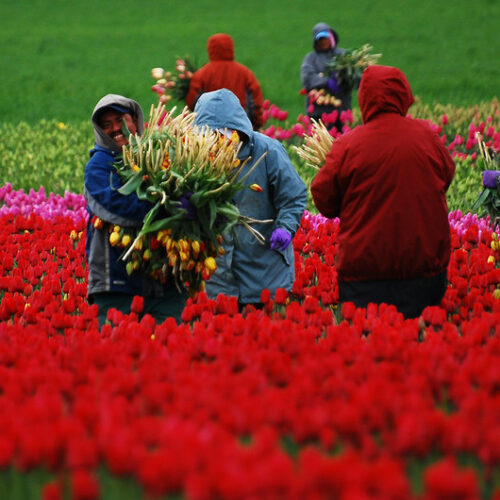
New funding to build farmworker housing in the Pacific Northwest, nationwide
The United States Department of Agriculture is soliciting applications for funding to build farmworker housing nationwide.
In the Pacific Northwest, leaders hope the money can address gaps in farmworker housing. The Pacific Northwest is in a housing crisis and that impacts rural small businesses and agricultural producers, as well as farmworkers, said Helen Price Johnson, who is the Washington State Rural Development director for the USDA.
Continue Reading New funding to build farmworker housing in the Pacific Northwest, nationwide
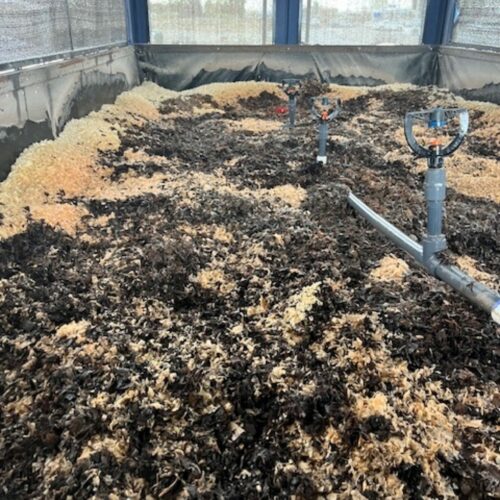
Worms eating airport deicer fluid could be greener approach to airline waste
The Tri-Cities Airport in Pasco is piloting a new program that could lead the country in cleanly disposing of deicing wastewater using worms. (Credit: BioFiltro) Listen (Runtime 0:57) Read To… Continue Reading Worms eating airport deicer fluid could be greener approach to airline waste



